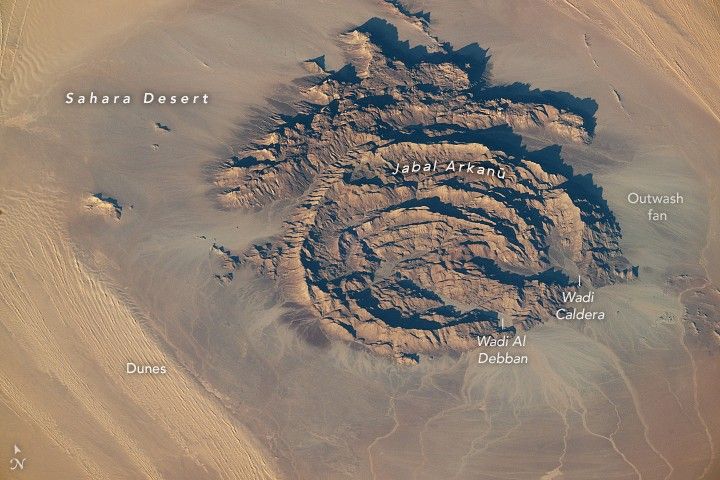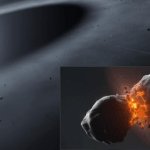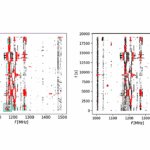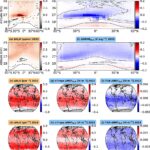Now Reading: Earth from Space: Eye of the Sahara
-
01
Earth from Space: Eye of the Sahara
Earth from Space: Eye of the Sahara


The Copernicus Sentinel-2 mission captures a spectacular geological wonder in the Sahara Desert of Mauritania: the Richat Structure.
This giant feature looks out from a sea of golden sand in the Adrar Region of northern Mauritania. Once thought to be the site of a meteor impact, the Richat Structure is now believed to have been caused by a process of uplift of a large dome of molten rock that, once at the surface, was shaped by wind, sand and water erosion. Geologists agree that the structure is at least 100 million years old.
The layered formation consists of a series of concentric rings and resembles a bull’s eye from space, so is also known as the eye of the Sahara or the eye of Africa.
The Richat Structure, 50 km in diameter, is easier to observe from space than from the ground, and has been a familiar landmark for astronauts since the earliest manned missions.
In this comparison, we can see two views captured in September 2025: the image on the left is in natural colour, while the image on the right is a false-colour combination which highlights specific features.
This remarkable formation exposes layers of sedimentary rock in different places, depending on the rates of erosion on the varying rock types. This can be better appreciated in the false-colour image. The more erosion-resistant quartzite sandstones appear in shades of red and pink and form the outer rings and high ridges internally, with valleys of less-resistant rock between them visible as darker areas. The central rings of the eye are about 80 m tall, with rocks older than those forming the outer rings.
In the image on the left, the dark area surrounding the eye is part of the Adrar plateau of sedimentary rock standing some 200 m above the surrounding desert sands, which in turn are part of the Erg Ouarane, an immense sand expanse stretching hundreds of kilometres to Mali.
Sand is also clearly visible encroaching into the structure’s southern side. Here, individual trees and bushes can be spotted as tiny dots, which are visible in purple in the false-colour image, following a dry riverbed structure.
Stay Informed With the Latest & Most Important News
Previous Post
Next Post
Previous Post
Next Post
-
 01From Polymerization-Enabled Folding and Assembly to Chemical Evolution: Key Processes for Emergence of Functional Polymers in the Origin of Life
01From Polymerization-Enabled Folding and Assembly to Chemical Evolution: Key Processes for Emergence of Functional Polymers in the Origin of Life -
 02Panasonic Leica Summilux DG 15mm f/1.7 ASPH review
02Panasonic Leica Summilux DG 15mm f/1.7 ASPH review -
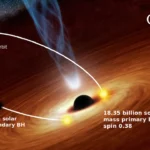 03Two Black Holes Observed Circling Each Other for the First Time
03Two Black Holes Observed Circling Each Other for the First Time -
 04How New NASA, India Earth Satellite NISAR Will See Earth
04How New NASA, India Earth Satellite NISAR Will See Earth -
 05And Thus Begins A New Year For Life On Earth
05And Thus Begins A New Year For Life On Earth -
 06Astronomy Activation Ambassadors: A New Era
06Astronomy Activation Ambassadors: A New Era -
07SpaceX launch surge helps set new global launch record in 2024















